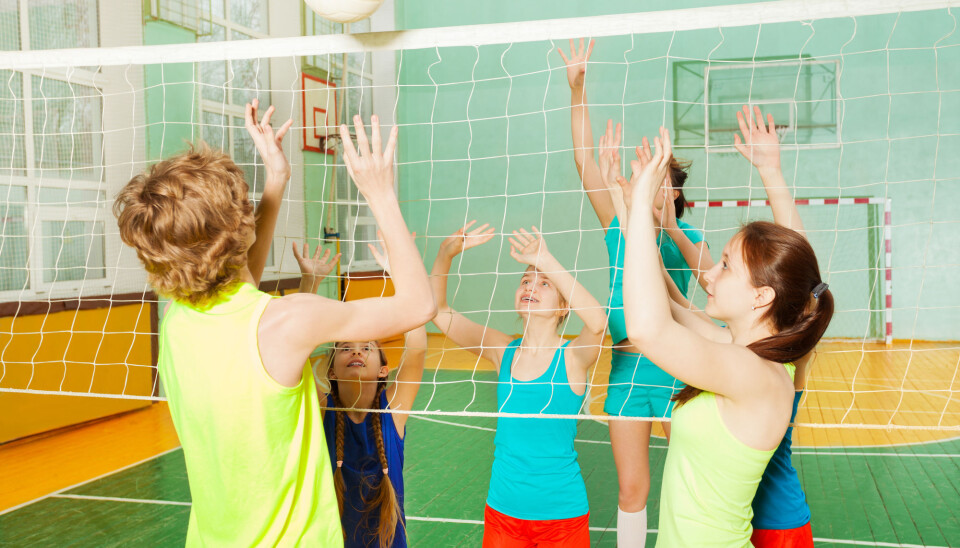
Should children be allowed to choose teams in gym class?
ASK A RESEARCHER: Or should the teacher do it? We ask the experts.
"Anna and Thomas, you pick the teams!", says the gym teacher.
Anna and Thomas look around. Then they start pointing at people.
But not at you.
Is it because you run too slow?
In the end, you are the only one left. And you wish you were anywhere else but there.
Pupils should not pick teams
The researchers and experts that ScienceNorway has talked to all agree that pupils should not be the ones picking teams for games in gym class. At stake is reduced self-esteem, unhappiness, poor social relationships and destructive class dynamics. In the worst case, more kids can end up skipping class.
Studies show that a performance-based learning environment increases the risk of poor mental health in school.
But how common is it that pupils pick teams by themselves in this manner? There is no research on this in Norway, so we can't know for sure, according to gym researchers Lars Bjørke and Kjersti Mordal Moen at Inland Norway University of Applied Sciences.
Maybe these issues were a bigger problem back in the day. At the same time, Bjørke and Moen know from their research that a lot has stayed the same in gym classes over the past 30 or so years.
However big the problem may be - being picked last is something that should not happen to anybody, the researchers agree.
Children don’t need toughening up
Signe Horn, general secretary of the Norwegian non-profit Voksne for Barn (Adults for Children) organization, believes we need go no further than to ourselves as adults to recognize how we would feel being the last person chosen. Voksne for Barn has learned through conversations with children and adolescents that it’s unpleasant to be among the kids who aren’t picked. This method tends to be used especially during gym class.
“Even as an adult with relatively good self-confidence, I feel uncomfortable when I have to choose where and who I should sit with. I want someone to make that choice for me. Imagine how bad these kids must feel in this situation,” says Horn.
She shudders when she thinks back to what it was like when she was in school, both in terms of choosing teams in gym class, but also in relation to organized sports.
“Some people might believe kids need to deal with this and that it’s just part of life. To me, it's like making kids go out in the cold weather a lot to better tolerate the cold. Usually they just end up being less tolerant of the cold,” says Horn.
Teachers must take responsibility
Professor Marie-Lisbet Amundsen in the Department of Education at the University of South-Eastern Norway (USN) believes that students should never choose teams themselves. It’s the teacher's responsibility.
The experienced professor – with several years behind her as an educational-psychological advisor – has special expertise on children, adolescents and adults with social and emotional problems and learning difficulties.
“It’s easy to understand that it’s difficult for the ones who are left out. For a lot of people, this method leads to reduced self-esteem and a lack of faith in their own abilities and resources. Often they refuse to participate in gym. And for some students, the process can lead to refusing to go to school,” says Amundsen.
She also believes that teams must be chosen carefully, so that the groups are as evenly matched as possible.
“When students are placed in a situation where they have to choose their peers based on who is best in gym, it sets up the conditions for a performance-oriented learning environment. This is very unfortunate in terms of student learning and well-being,” says Amundsen.
Shouldn’t be an open process
Associate Professor Mats Melvold Hordvik at the Norwegian School of Sport Sciences believes that it can be fine for students to choose teams, but that it must be done according to guidelines and with help from the teacher.
“All teams should consist of students with different backgrounds, experience and gender. At the beginning of the school year, students can’t make the selections themselves, so the teacher has to take responsibility. Gradually, more can be left up to the students,” Hordvik says.
He believes it’s important for the teacher to become well acquainted with the students before breaking them into teams. It is also important for the teams to work together over an extended period of time and not just for one class or activity. Having students pick teams should only happen after they have completed a form where they answer questions about what kind of experiences they want to have with the activity.
“Choosing teams shouldn’t be an open process, where students stand along the wall and get picked one by one. The teams should be decided in advance of the class,” says Hordvik.
He also thinks random counting off doesn't solve the problem. If no thought is given to how teams are divided, over time the class dynamics and social relationships will suffer.
———































